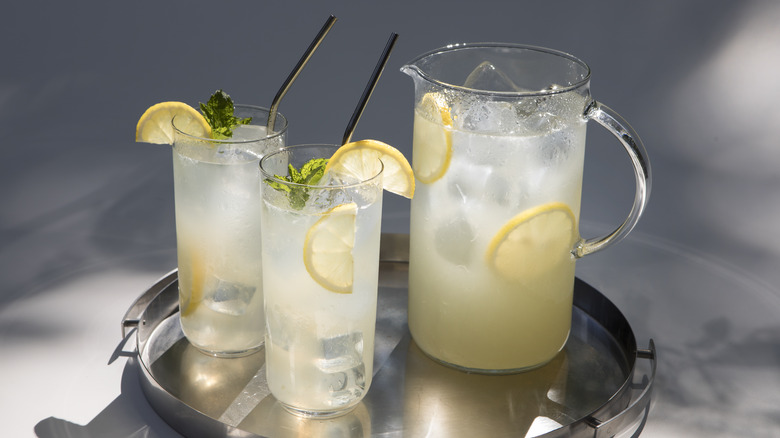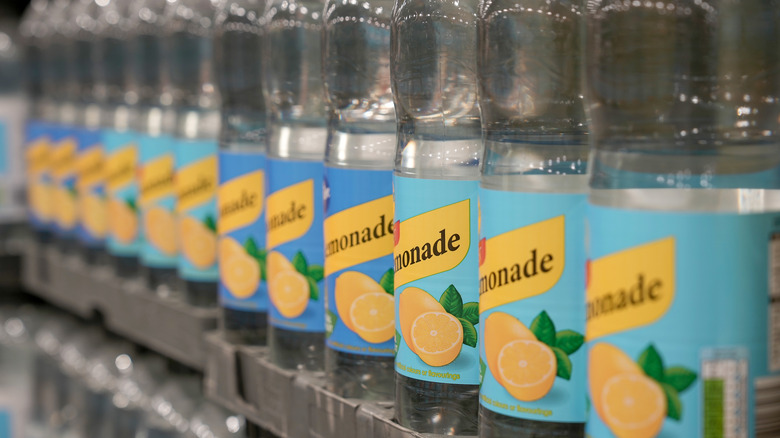European Lemonade Looks Very Different Than Its American Counterpart
It's a balmy summer's day and you head into a coffee shop or bar for a refreshing drink to quench your thirst. You're imagining a sweet, slightly tart, cloudy drink from your childhood — the kind you used to sell at makeshift stands on your front lawn — but your order arrives, and you're confused. Why have you been given something that tastes like Sprite when you asked for a lemonade? The answer is probably because, in this instance, you're an American visiting Europe. On the other hand, if you're a Brit, you've probably experienced the inverse of this when you're in the States. You ask for the generic term "lemonade" out of convenience (rather than name-dropping a particular brand), only to receive a flat, juice-like drink, rather than the clear, fizzy liquid you wanted.
Things differ even further across the rest of Europe. You can ask for a "limonade" in Germany, but be aware that the term can mean any non-alcoholic carbonated drink flavored with fruit. And in Belgium, it's common to use "limonade" for orange-flavored drinks like Fanta. Every so often, social media gets flooded with posts about these differences in terminology, as people moving between countries are faced with this unexpected cultural difference. "I will never forget the jumpscare I faced when in London someone ordered lemonade and they brought out a sprite," one person tweeted. "lemonade doesn't exist in the UK. they call sprite 'lemonade.' nothing ever broke me like this," another wrote.
Why are the drinks different?
In the beginning, lemonade in the U.S. and Europe was likely very similar. Lemonade first originated in Egypt somewhere between the 10th and 13th centuries, before expanding into Europe. It became especially popular in America in the 19th century as a cure for scurvy and later, as an alternative to alcohol during prohibition. It was easy to make in the U.S., as the warm climate across California, Arizona, and Florida provides perfect conditions for lemon cultivation. As a result, the recipe for American lemonade has remained relatively unchanged since then.
@elisheva.abramson Replying to @princess.ket #uk #us #american #lemonade #language
In Europe, sparkling water is much more common than it is in the U.S. First invented in 1787, it was likely added to lemonade after a surge in popularity in the 19th century. It's from this point onwards that recipes for the two drinks begin to split, as the newly carbonated variety of lemonade soon began to outpace the original. Then, with the influx of branded drinks like 7UP and Sprite, "lemonade" became a catch-all for anything sparkling and lemon-flavored.
As this TikTok video by @elisheva_says explains, when ordering lemonade in the U.K., you should ask for "cloudy lemonade." While this isn't exactly the same as the lemonade you'll find in the U.S. (and in some cases, it may still be carbonated), it's much closer taste-wise to what you're used to and is about the best you can get, aside from making a batch of copycat Chick-Fil-A lemonade to enjoy at home.

